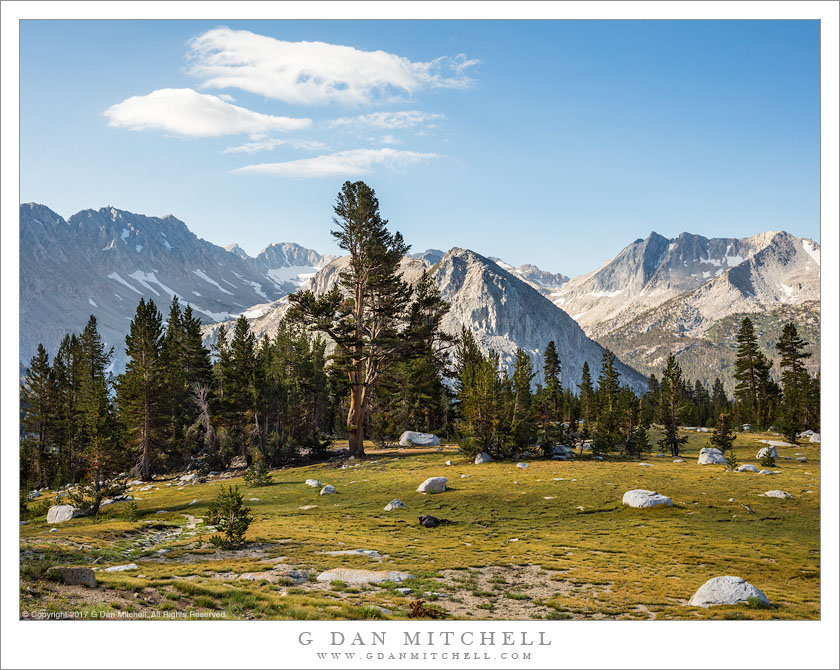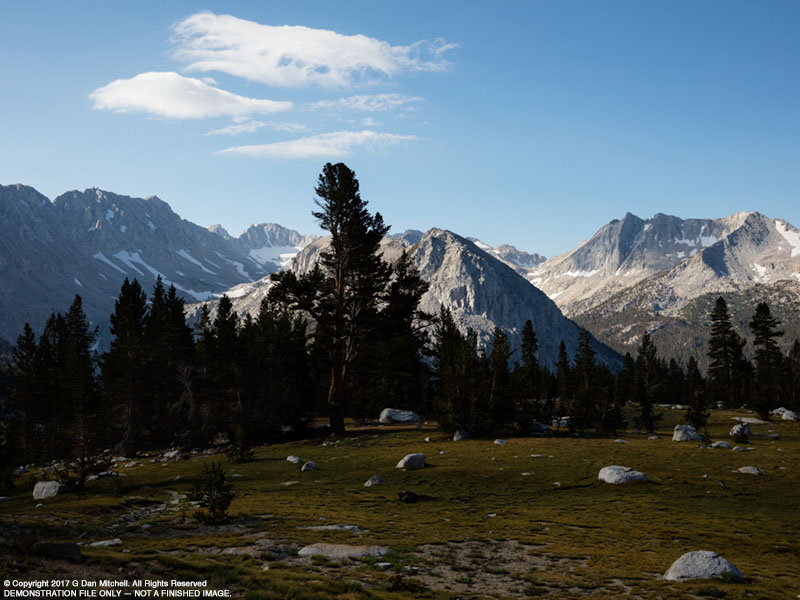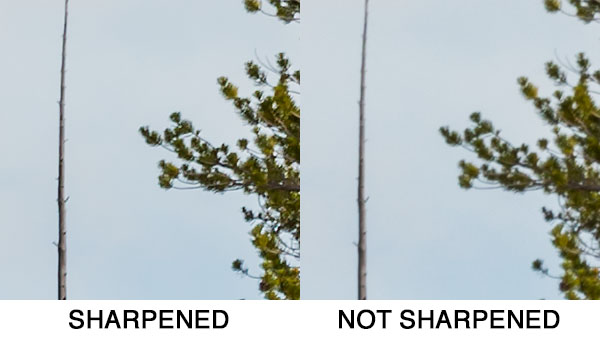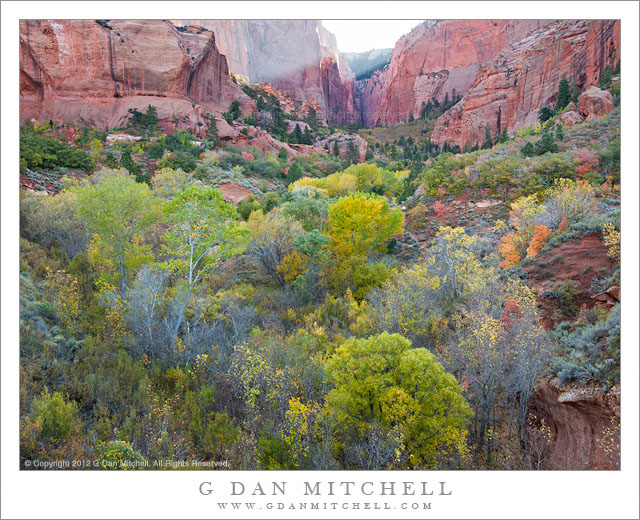Recently I spent more than a week photographing in a beautiful area of the Sierra Nevada backcountry. A short walk above the spot where we camped was a magical meadow — a place filled with light, grasses still green but starting to turn golden, high elevation trees scattered around the edge of the meadows, and a deep valley separating us from alpine valleys topped by steep granite peaks and ridges with scattered snow fields. At times clouds would float by and add some interest to the blue Sierra Nevada sky.
What I saw
Here is one of several photographs I made in this meadow, with the first example being a small version of a print-ready final interpretation…

Here is another version of the photograph, straight out of my raw file conversion program and before I did additional work in Photoshop…

I think it reflects fairly well what I saw while I stood behind the tripod as light softened by closer clouds spread across the meadow. I’m confident that anyone who had been there with me would agree.
What the camera saw
But that is not what the camera saw. Here is what my captured file looked like before I did my raw conversion post-processing…

Yuck!
This SOOC (“straight out of camera”) image looks pretty bad. The sky is OK, but the meadow is dark and flat-looking, not showing the actual quality of light at all, and the forest appears to be almost completely black.
What’s up here? Am I trying to trick you and present a false version of the scene? Am I an incompetent photographer who completely blew the exposure? Am I trying to “compensate” for a bad exposure by using radical post-processing?
The answer is “none of the above.” Continue reading What You Get Is Not What You See


